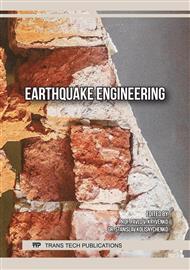p.305
p.311
p.321
p.329
p.337
p.347
p.355
p.361
p.371
Seismic Protection of an Over-Ground Parking Lot over the Dambovita River Using the Basic Insulation Method
Abstract:
Earthquakes cause rapid variations of direction, speed and acceleration. Vibrations are generated either by the moves of the tectonic plates, or by the volcanic activity, or by the collapse of the geological layers. The foundation conveys the maintained oscillatory movement and executes free cushioned oscillations. Due to the seismic action, an energy balance is created that contains: the energy induced into the structure, the energy absorbed by the structure and the energy returned to the ground. All these forms of energy constitute the capable energy of the structure. This energy reflects the possibilities of elastic structure deformation but also the elastoplastic deformation capacity. The seismic insulation systems are intended to reduce the impact of earthquakes on buildings by means of special devices. One uses two types of seismic systems: active and passive. The insulation of the propping base of the structure aims at inserting a smaller amount of energy into the superstructure. The protection of the structures exposed to the risk of earthquake is based on the three fundamental operational modes: insulation, connection, dissipation of energy. Connectors. Insulators and seismic dampers. The centrically braced metallic frames provide resilience, rigidity and ductility, being thus ideal for the bracing of the seismic systems.
Info:
Periodical:
Pages:
337-346
Citation:
Online since:
February 2020
Authors:
Keywords:
Price:
Сopyright:
© 2020 Trans Tech Publications Ltd. All Rights Reserved
Share:
Citation:



